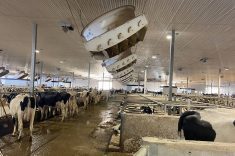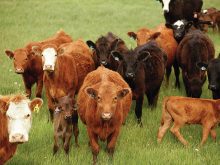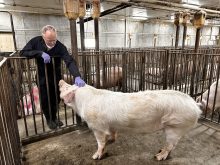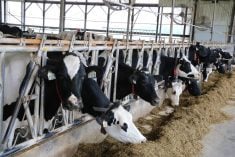Advances in the production of sexed semen have opened many doors in dairy and beef cattle production. It is another way producers can fine tune their management to potentially get higher returns.
For many years, the dairy sector has focused on using sexed semen for heifers and top-end cows, the cows from which producers want to keep replacements.
Heifers have the newest genetics, and the lower birthweight of heifer calves is an advantage in calving ease. This allows the rest of the cows to be bred for beef or beef on dairy, as we like to call it. To me, they always look more beef than dairy.
Read Also

VIDEO: British company Antler Bio brings epigenetics to dairy farms
British company Antler Bio is bringing epigenetics to dairy farms using blood tests help tie how management is meeting the genetic potential of the animals.
I wonder if dairy producers would prefer to use male semen from beef bulls. Conception rates initially were worse with sexed semen but that is improving and the odds are now 90 per cent and above that offspring will be the intended sex.
I have some clients who excel at raising replacement heifers for select breeding heifer sales, and they prefer to get more heifer calves than bull calves because the return is higher. Moderate bulls used on heifers and their calves will produce much better replacements than if selecting bulls solely for calving ease.
In dairy bulls, the female sexed semen is kept and the rest thrown away, so it’s no wonder the cost is about triple compared to normal semen. That’s a given in the dairy industry, where bull calves are undesirable.
In the beef industry, if both types of semen can be used, there are considerable financial savings. If both male and female semen could be sold for different uses, that’s fantastic.
Beef farmers who want bull calves because of growth and carcass quality can use that fraction. Once we castrate and then implant, we should get similar growth compared to an intact bull. Now that we have lidocaine impregnated castration bands coming on the market, the stress of castration is minimized and weaning weights should rise.
Heifers born from sexed semen can be palpated to remove those with a poorly formed pelvis and small pelvic size. Another advantage of sexed semen could be near-total removal of freemartins. In twins, half the time they are a bull and a heifer, and the heifer is likely a freemartin.
The neat thing about sexed semen is that mixed twins would be almost eliminated. Freemartins grow well but they act more like bulls. They are often selected for replacements because they perform so well, but good records or palpation are necessary to rid them from the herd.
Twin heifers have a higher likelihood of producing twins, and twin bull calves, if kept as bulls, produce heifer offspring with higher likelihood to produce twins.
Producers who want to expand their herds or raise top quality heifer replacements may be able to use the female side of sexed semen. I also see some great management in the purebred industry, in which some cows raise better heifer or bull calves because of their phenotype and genotype.
By using both fractions of semen, one could select a specific cow to raise a bull or heifer calf. This has not occurred yet but as more semen is sexed from beef bulls, it is possible and could lead to further advances in the beef industry.
Here’s to a great breeding season and high conception this year for everyone.
Roy Lewis works as a veterinarian in Alberta.

















